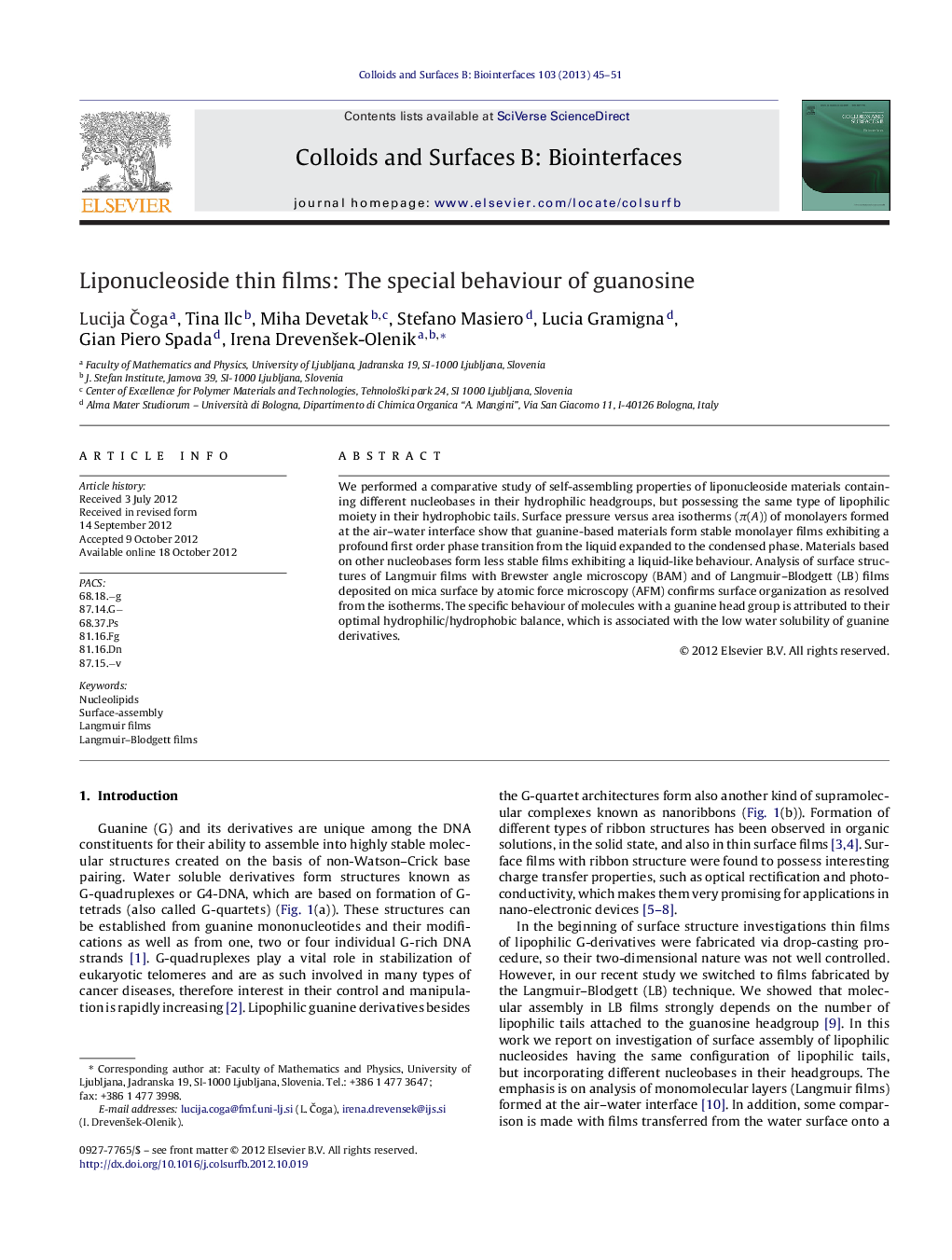| Article ID | Journal | Published Year | Pages | File Type |
|---|---|---|---|---|
| 600328 | Colloids and Surfaces B: Biointerfaces | 2013 | 7 Pages |
We performed a comparative study of self-assembling properties of liponucleoside materials containing different nucleobases in their hydrophilic headgroups, but possessing the same type of lipophilic moiety in their hydrophobic tails. Surface pressure versus area isotherms (π(A)) of monolayers formed at the air–water interface show that guanine-based materials form stable monolayer films exhibiting a profound first order phase transition from the liquid expanded to the condensed phase. Materials based on other nucleobases form less stable films exhibiting a liquid-like behaviour. Analysis of surface structures of Langmuir films with Brewster angle microscopy (BAM) and of Langmuir–Blodgett (LB) films deposited on mica surface by atomic force microscopy (AFM) confirms surface organization as resolved from the isotherms. The specific behaviour of molecules with a guanine head group is attributed to their optimal hydrophilic/hydrophobic balance, which is associated with the low water solubility of guanine derivatives.
Graphical abstractFigure optionsDownload full-size imageDownload as PowerPoint slideHighlights► Two full series of liponucleoside molecules containing the same hydrophobic part attached to headgroups with all 4 nucleobases were investigated. ► Our main finding is that surface assembly of liponucleosides with guanine headgroup is very specific with respect to the others. ► We atribute the observed specific behaviour to the generaly known low solubility of guanosine compounds. ► Our results also represent one of the rare cases of studies of self-assembly of guanosine derivatives in Langmuir and LB films.
